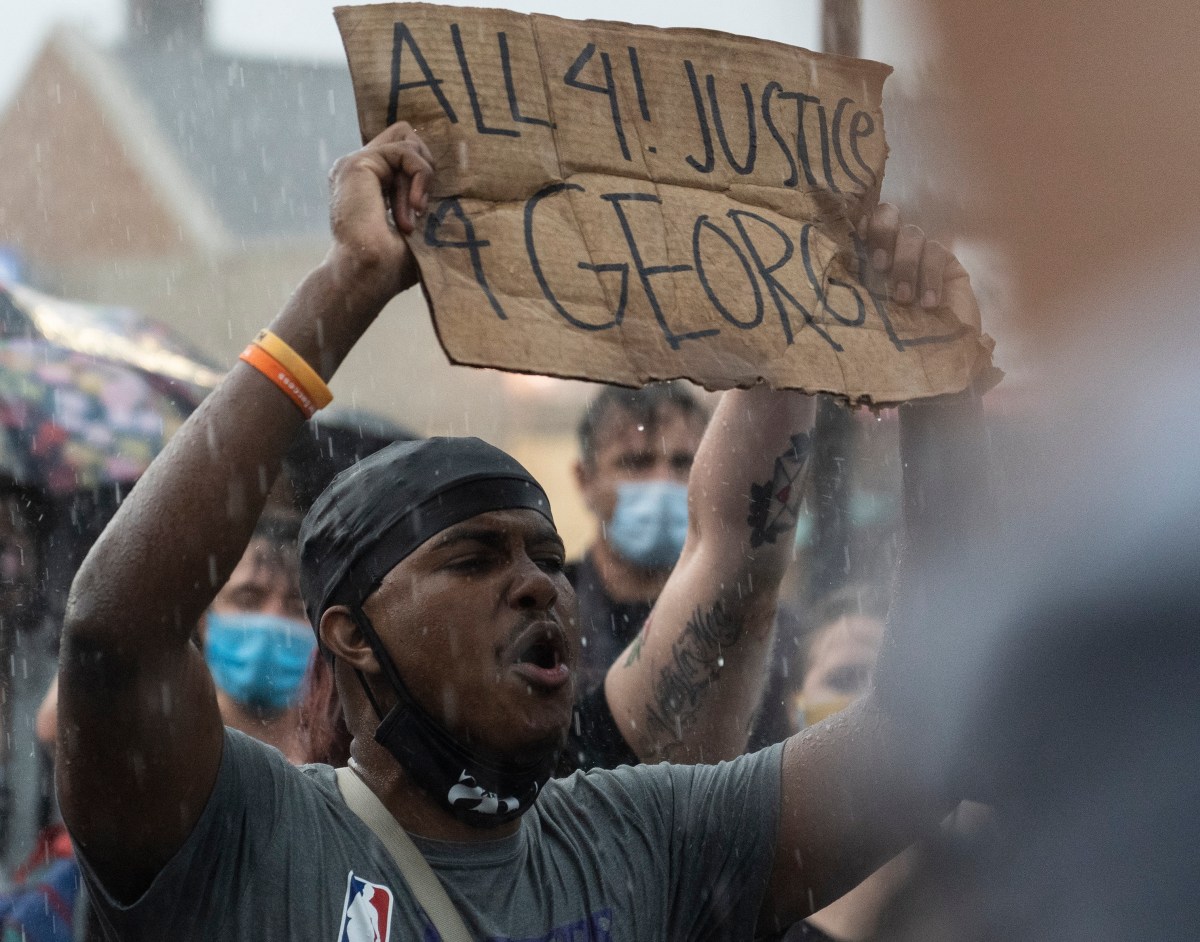On May 25, 2020, in Minneapolis, Darnella Frazier, then 17, bravely recorded Derek Chauvin’s murder of George Floyd. Her shocking images circulated the globe and helped lead to the police officer’s conviction and, most recently, a Justice Department report examining the Minneapolis Police Department (MPD) and its record of civil rights violations.
One thing often lost after Frazier’s video, the 46-year-old’s murder, and Chauvin’s sentencing is how the MPD has abused young people. The federal report highlights how police in a city perceived as progressive have inflicted “unnecessary, unreasonable, and harmful uses of force” on young persons and how they routinely fail to de-escalate situations involving youth, instead relying on “unnecessarily” aggressive tactics.
A particularly gut-wrenching section of the report, issued earlier this summer, notes that three years before Chauvin killed Floyd, the veteran officer had beaten, pinned to a wall, and knelt on the back or neck of a compliant 14-year-old Black boy.
The Justice Department also identified significant disparities in officers’ use of force against youth of color versus Caucasians, plus racist statements and threats against Somali American youth. One example of MPD overreaction was handcuffing the ankles and wrists of an 11-year-old Black girl they suspected of overdosing.
Critically, the federal investigators found that MPD lacked effective policies to guide officer interactions with youth. The report recommended developing youth-specific guidelines and training as a “remedial measure.”
We’re heartened to hear the Justice Department urging a law enforcement agency to implement training and supervisory practices that protect youth, as it has previously done in reports on Baltimore, Chicago, and Louisville police departments.
But there are 18,000 law enforcement agencies in the United States, and only a tiny fraction have adopted policies that direct officers to differentiate their responses to youth and adults. Police should treat a 14-year-old and a 40-year-old differently, whether using force, providing Miranda warnings against self-incrimination, or interrogation practices. The few law enforcement agencies that do adopt such policies often do so only after being sued by families of youth harmed by police conduct. On average, states offer police cadets only four hours of training on juvenile justice.
Professionals who work with youth understand that their brains are still developing and lack impulse control. They’re wired to challenge authority, crave peer approval, and often do not grasp the consequences of their actions. And still, too many law enforcement officers treat these developmental responses, as well as the “fight or flight” traumatic reactions of teens, as proof of guilt or willful defiance, leading to arrest and use of force.
The harm caused by police abuse is long-term. Abundant research shows that young people carry the scars of violent or abusive police interactions into adulthood, damaging their sense of self and trust in institutions and authority figures.
Decision-makers frequently insist that police officers can be relied upon to use common sense when dealing with children and youth. But time after time, incident after incident, we see that they cannot.
We should not wait for another national moment of reckoning triggered by unnecessary police violence against youths to act. That’s why this October, we’re releasing the results of a collaborative effort to provide policies governing police-youth interactions that law enforcement agencies can adopt nationwide.
These policies will give agencies, and the communities they serve, tools to guide officers’ interactions with youth. They address a range of situations, including traffic and investigatory stops, searches, arrests, interrogations, and unnecessary law enforcement presence and involvement in schools; they also emphasize de-escalation and recommend tested strategies that respect the humanity and dignity of adolescents to defuse potentially volatile situations. The policies recommend using force only when no alternatives are available.
By adopting policies that address law enforcement interactions with youth most vulnerable to harm from encounters, such as youth of color, youth with disabilities, and LGBTQ+ youth, the policies provide officers guide rails and communities accountability.
The policies include strict limitations on using tasers, which administer 50,000 volts of electric shock and are known to result in brain damage and sometimes death, on 12-year-olds. SFY’s review of 20 large law enforcement agencies found that only 7 prohibit such use; 13 others don’t address it.
With examples of best practices on how to guide their interactions with young people, law enforcement agencies have one more reason to adopt such policies swiftly and reinforce them through training.
On that hot night in May 2020, a 17-year-old Frazier saw what others refused to see, just as so many law enforcement agencies refuse to assess and improve their training, policy, and supervision of officers’ interactions with youth. It’s time for everyone to open their eyes.
Shelley Jackson and Lisa H. Thurau serve in senior roles at Strategies For Youth, a national nonprofit that works on improving interactions between police and young people, with a focus on youth of color, and to reduce unnecessary arrests and use of force by police against young people.



